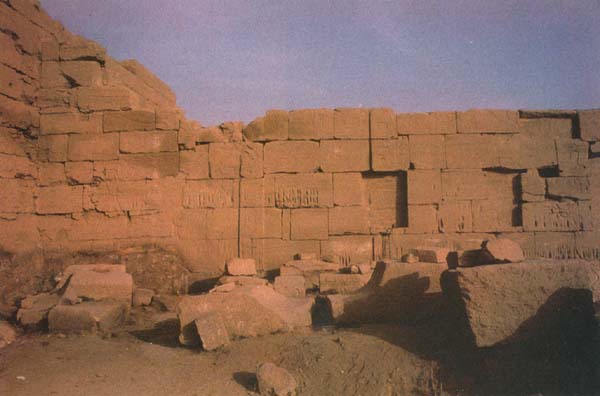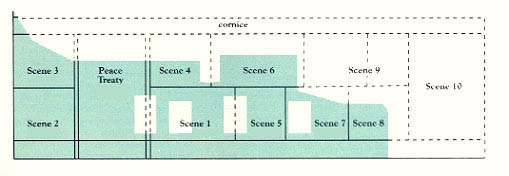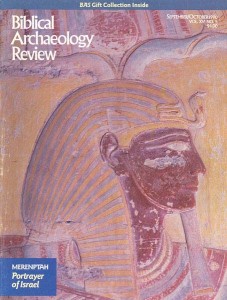Understanding the Wall of Reliefs
Sidebar to: 3,200-Year-Old Picture of Israelites Found in Egypt

Now partially destroyed, the western wall of the Cour de la Cachette, in the Karnak temple, originally stood 30 feet high and about 158 feet long. Here we see a portion of it, along with a vertical drawing that locates the positions of its reliefs and gives page numbers for photos. The plan shows the area as if looking down on it. The dashed lines in the drawings represent reconstructed portions of the wall based on the extant wall and on clues provided by the fallen blocks that lie in the field before the wall. Two rectangular areas from which blocks are missing can be seen in the middle of the wall, at right in the photo; these areas correspond to the first two gray rectangles from the left in the vertical drawing.


The wall adjoins the great Hypostyle Hall, partially represented at the left end of the plan. Karnak’s great Hypostyle Hall, the largest such hall known from ancient Egypt, features 134 massive pillars. Hypostyle halls formed part of the standard architectural complex of Egyptian temples and symbolized the dense, papyrus filled marsh, where according to myth, Isis reared young Horus after Seth slew his father Osiris.
Already a library member? Log in here.
Institution user? Log in with your IP address.

